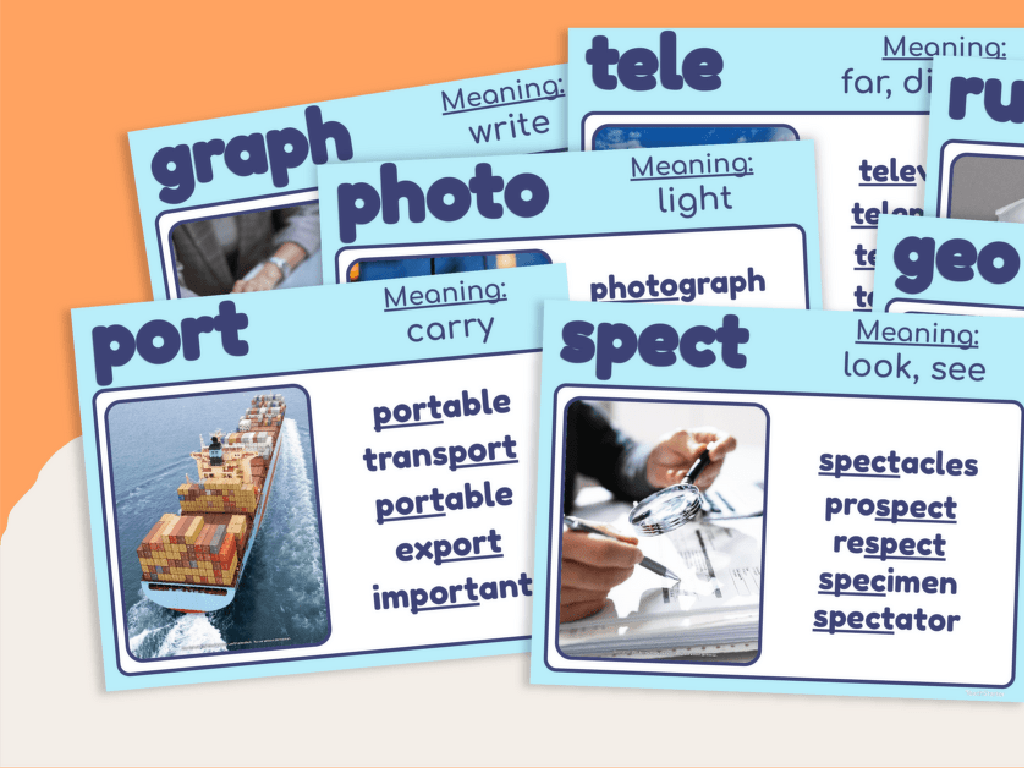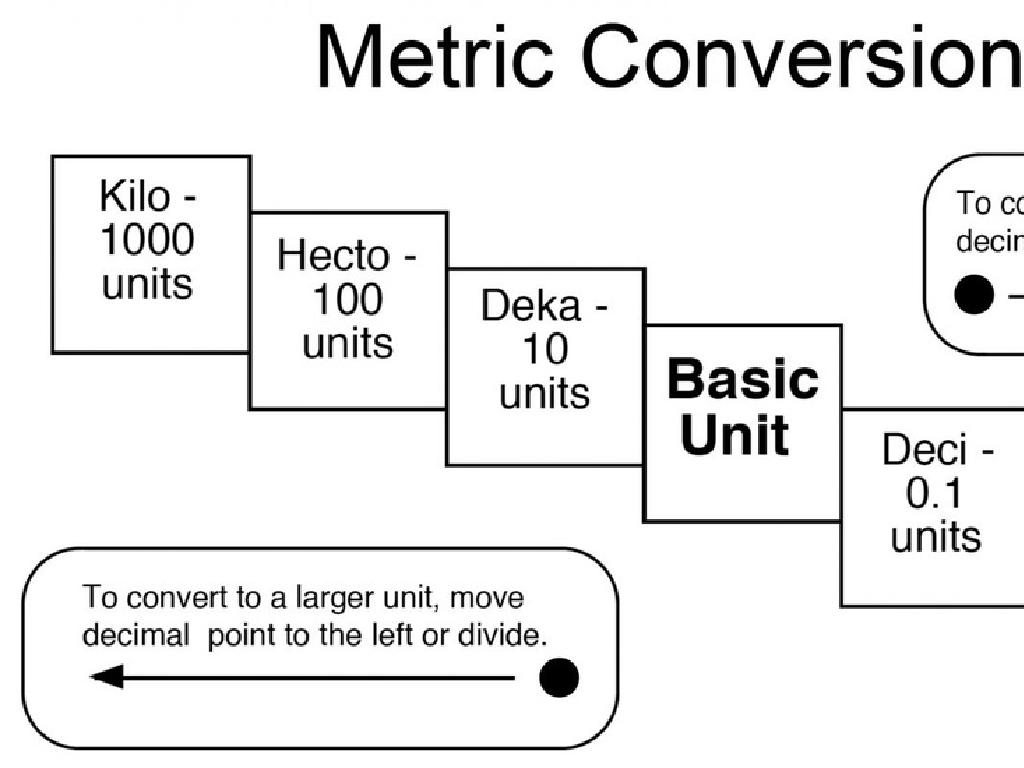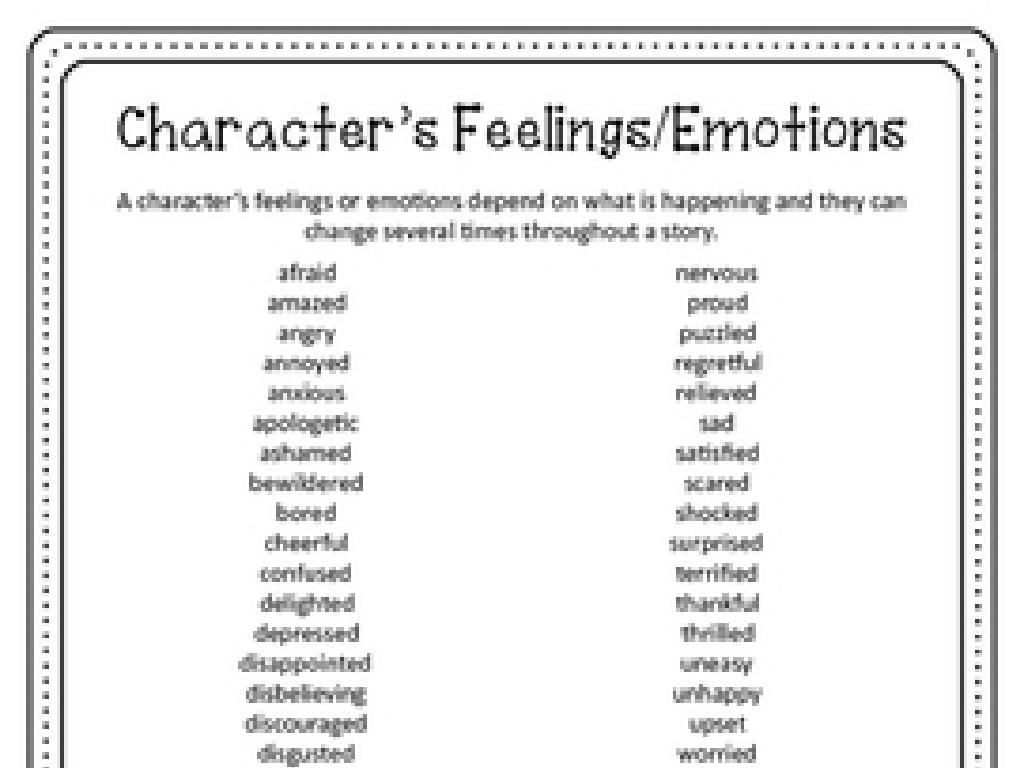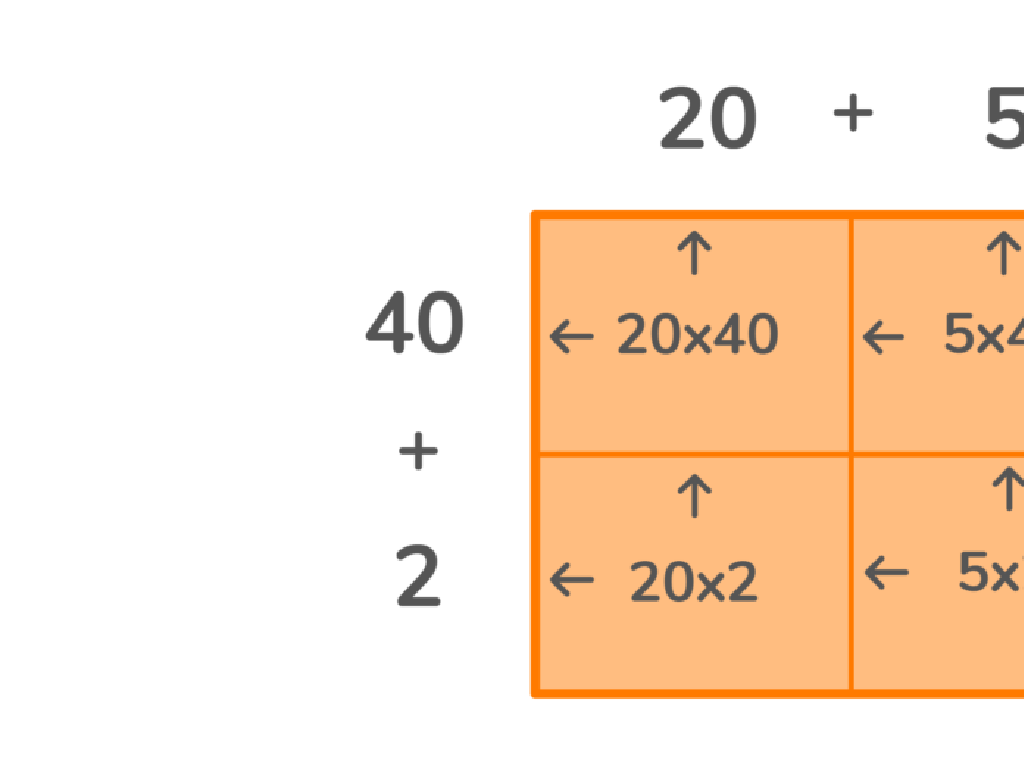Similes With Pictures
Subject: Language arts
Grade: Third grade
Topic: Sensory Details
Please LOG IN to download the presentation. Access is available to registered users only.
View More Content
Exploring Sensory Details Through Similes
– Our five senses help us explore
– Sight, sound, smell, taste, touch guide us
– Describing the world using senses
– ‘The cookies smelled like fresh rain’
– Sensory details make writing vivid
– They paint pictures in the reader’s mind
– Similes compare with ‘like’ or ‘as’
|
This slide introduces the concept of sensory details and how they are used in language to create vivid imagery. Start by discussing the five senses and how we use them to perceive the world. Explain that sensory details in writing help to describe how things look, sound, smell, taste, and feel. Introduce similes as a way to compare different things using ‘like’ or ‘as’ to create strong images in the reader’s mind. For example, ‘The cookies smelled like fresh rain’ uses the sense of smell to compare the scent of cookies to that of rain. Encourage students to think of their own similes using sensory details.
Understanding Similes
– Similes compare two things
– They make descriptions more vivid
– Use ‘like’ or ‘as’ in similes
– Helps create a strong image in our mind
– Example: ‘As busy as a bee’
– Describes someone very active
– Example: ‘Sleeps like a log’
– Describes someone sleeping very deeply
|
This slide introduces the concept of similes to third-grade students. Similes are a figure of speech used to compare two different things, showing similarities between them. The words ‘like’ or ‘as’ are essential in forming similes. Provide clear examples such as ‘As busy as a bee’ to describe a very active person or ‘Sleeps like a log’ for someone who is sleeping soundly. These examples help students understand how similes create vivid images and make descriptions more engaging. Encourage students to think of their own similes and share them with the class to reinforce their understanding.
Using Similes with Our Senses
– Similes for sight and sound
– ‘The fireworks looked as bright as day’
– Similes for smell and taste
– ‘The flowers smelled as sweet as perfume’
– Similes for touch
– ‘The puppy’s fur felt as soft as cotton’
– Example: Sour lemon simile
– ‘The lemon tasted as sour as vinegar’ shows how similes compare taste
|
This slide introduces the concept of using similes to describe sensory experiences. Similes are a type of figurative language that compare two different things using the words ‘like’ or ‘as’. They can make descriptions more vivid and help readers imagine what is being described. For example, comparing the brightness of fireworks to daylight gives a clear picture of how intense the light is. Encourage students to think of their own similes for different senses and to share them with the class. This will help them understand how similes enhance writing and make it more engaging.
Creating Our Own Similes
– Choose an object to describe
– Pick a sense to focus on
– Use ‘like’ or ‘as’ in your simile
– Compare your object to something familiar
– Example: Clouds and cotton
– ‘The clouds are as fluffy as cotton’ shows how clouds look
|
This slide is designed to engage third-grade students in creating their own similes, a key component of sensory details in language arts. Start by having students select an object they want to describe. Then, ask them to choose which of the five senses (sight, sound, smell, taste, touch) they will use to describe their object. Teach them how to construct a simile using ‘like’ or ‘as’ to draw a comparison to something everyone knows, making their description more vivid and relatable. For example, comparing the softness of clouds to cotton. Encourage creativity and provide additional examples if needed. In the next class, students can share their similes and discuss the sensory details they used.
Practice Time: Crafting Similes
– Understanding similes
– Similes compare two things using ‘like’ or ‘as’
– ‘Like’ or ‘as’ in similes
– Use ‘like’ or ‘as’ to show how two things are similar
– View a picture together
– Create your own simile
– Think of how the picture makes you feel or what it reminds you of
|
This slide is designed for an interactive class activity to practice writing similes. Begin by explaining that a simile is a figure of speech that compares two different things in an interesting way using the words ‘like’ or ‘as’. Show the students a picture and ask them to think of how it relates to something else they know. Encourage creativity and guide them to use ‘like’ or ‘as’ in their comparisons. For example, if the picture is of a bright sun, a simile could be ‘The sun is like a giant yellow ball in the sky’. Have a few examples ready and provide positive feedback to students as they share their similes.
Class Activity: Simile Gallery Walk
– Create a simile with your picture card
– Write your simile on a sticky note
– Place it under the picture card
– Walk and discuss classmates’ similes
– Share what you liked about others’ similes
|
This activity is designed to help students understand and create similes using visual aids. Provide each student with a picture card and encourage them to think creatively to come up with a simile that describes the picture. Once they write their simile on a sticky note, they’ll place it under the picture card on the wall or board. After everyone has posted their similes, allow the students to walk around the room to read and discuss the similes created by their classmates. This will foster a collaborative learning environment and help students appreciate different ways of expressing similar ideas. As a teacher, guide the discussion by asking questions about the similes and pointing out particularly creative examples. Prepare to offer assistance to students who may struggle with the concept of similes or with writing their own.
Similes Make Writing Sparkle!
– Congratulations on creating similes!
– Similes add fun to descriptions
– Like ‘as busy as a bee’ makes writing lively
– Practice similes in your writing
– Try using similes in homework stories
– They make stories more vivid
– Helps readers imagine the scene better
|
This slide wraps up the lesson on similes, congratulating the students on their efforts to create similes and reminding them of the importance of similes in making writing more descriptive and engaging. Emphasize that similes, which compare two different things using ‘like’ or ‘as’, add a layer of fun and help readers visualize what’s being described. Encourage the students to continue practicing by incorporating similes into their daily writing tasks, whether it’s for homework, stories, or even just describing their day. Provide examples of similes for common descriptions to help them get started and suggest they share their similes with the class for further practice.






